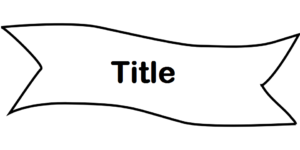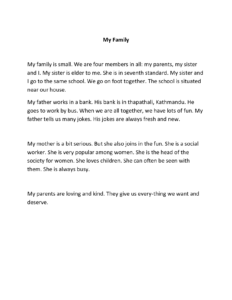Having a blog on your company website is important for any small business. It attracts new visitors while encouraging previous ones to keep coming back.
Fresh content also keeps your site updated, increasing the chances that it will be ranked higher in search engine listings.
But as a small business owner, you may not have time to craft all of these articles, nor the financial means to hire a blogger.
Don’t let your busy schedule hinder you from sharing your valuable insights! Here’s how you can write a post in 30 minutes or less.
Pick a Familiar Topic (3-5 Minutes)
With only a short amount of time to generate content, you may be inclined to Google other articles written in your industry with the intention of simply paraphrasing those – don’t.
Not only is this a pretty easily identifiable form of plagiarism, it won’t deliver the results that you want.
Good content is valuable content – stuff other people and businesses like linking to, but it won’t be very useful to anyone if all of your information is already out there.
You’re sharing the old news that your target audience has probably already seen anyway.
If you have less than 30 minutes to develop a quality article, don’t pick a topic that’s going to require a lot of research. Instead, pick a topic in which you already know a lot about.
Everybody is an expert in something. By sharing this information, built organically from your own knowledge and your own personal experiences, you’re producing something fresh, you’re producing something valuable, and you’re producing something that’s probably a lot more interesting than the topics in your industry that have already been done a hundred times before.
Set Your Intentions in Your Title (3-5 Minutes)

A well-written article with valuable information can easily be overlooked if the title isn’t persuading others to click the link and read on.
That’s why it’s very important that your title does its job. A good title provides enough information to let someone know what the article is about, without giving away too much of the good stuff.
Good titles also err on the shorter side because they’re easy to remember and easy to communicate to others.
One of the simplest ways you can create an effective blog post title is to focus on presenting exactly what the reader is going to get and in the shortest way possible.
This is why articles that start with “How To…” or “5 Signs…” are so popular. The title is setting up an expectation. In the example of the “How To” article, readers expect that the article will be broken down into small steps they can follow and that by the end, they’ll know how to do something they couldn’t do before.
With the “5 Signs” article, readers expect an article to be broken down into five segments they can choose to skim or read in full, and when they’ve finished, they’ll have obtained five new pieces of information.
Strong Title: Top 3 New Video Games You Should Buy This Fall
Weak Title: New Video Games
Weak Title: Fall Video Games
Keep in mind that a catchy title may attract an audience, but they won’t stick around if they find that they’ve been misled. Make sure your blog post is delivering on your title’s promises.
An in-tune title will help more than just your readers. It can help you throughout the writing process as well. A finely-focused goal like “Pros & Cons of Crockpot Dinners” or “3 Tips to Improve Your Resume” provide your article with a precise destination. All you need now is a road map!
Sketch an Outline (5 Minutes)
It sounds like a huge waste of time, but an outline is actually a huge time saver. An outline can also make a tremendous difference in the quality of your post.
Outlines provide you with a step-by-step guide for writing your article. (In other words, a roadmap to your destination.) They prevent you from starting a post called “5 Local Parks to Visit This Weekend” and then realising halfway through that there’s really only two parks, and one of them is under construction.
Outlines will also prevent you from starting an article about local parks, and halfway through, ranting about the community’s complete lack of dog-friendly areas. With an outline, a clear path has already been laid down and all you have to do is follow it.
Outlines don’t have to be particularly long or detailed in order to do their job, especially if you only have 30 minutes to get your article typed and posted.

They don’t even have to be created on your computer, nor do they require a fancy structure – a few scribbles on a Post-It or napkin could suffice.
If you’ve picked a good title that sets your intentions, all you’re doing now is identifying the smaller pieces that will fulfill that goal.
Write out the signs, the steps, the tips, the how-to’s, or the basic points you plan to include in your post along with one or two thoughts and ideas you want to touch on for each.
If you’re struggling with this, you’ll definitely struggle writing the post. You may want to reframe your title or choose a different topic.
Get Focused (1 Minute)

With your title picked and your outline set, you’re ready to start writing your post.In theory, connecting the dots you’ve established in your outline shouldn’t take a long time, but between checking text messages, responding to emails, scrolling through Facebook, and getting yourself a snack, what began as a quick blog post can easily take all day.
Starting and stopping too many times can also cause you to lose your train of thought, and these little interruptions can be seen as choppiness in your writing.
When setting aside time to write your blog post, don’t pick the 30 minutes squished in between two meetings or the time you’re also using to catch up on TV.
These should be 30 minutes where you’re feeling alerted and creative and where you can eliminate interruptions and take control of distractions. Put your phone in a drawer, sign out of chat windows, and close out your email.
Keep it Short (15 Minutes)

Your blog post doesn’t have to be 500, 800, or 1,000+ words to be valuable to your target audience. In fact, if you only have 30 minutes to write, a shorter article is probably better.
A quality-written post that sets your intentions, does what it’s promised, and is only 200 or 300 words, is far more effective and is more likely to be shared on social media pages than an article that’s two or three times as long, but is sloppily-written and disorganized.
If you find that you have too much to say for your insights to be effectively communicated in 30 minutes, and you don’t have more time to spend on expanding your post past a few hundred words, you may want to consider breaking your article up into a series and posting a segment each week.



